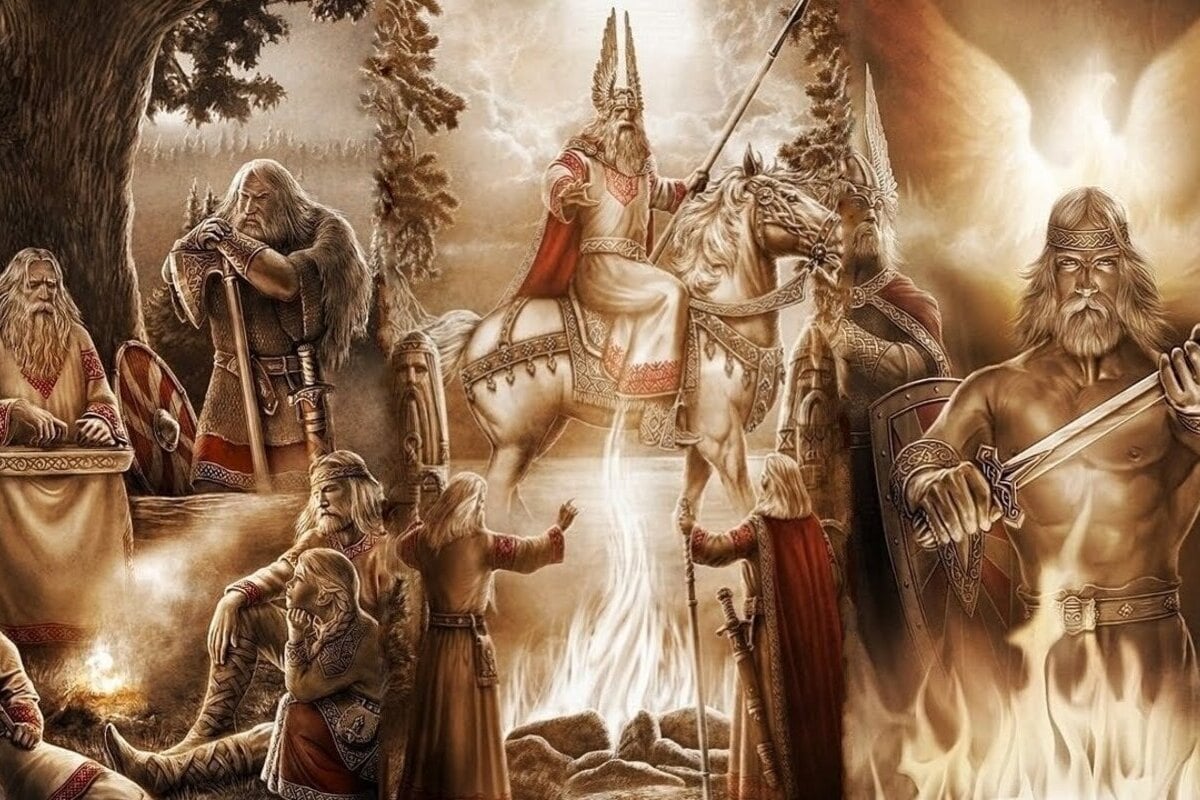Paganism is not merely an ancient set of beliefs but a comprehensive worldview that shaped human spirituality and culture for thousands of years. Across the world, people worshipped natural forces, celestial bodies, ancestral spirits, and a multitude of gods, creating unique pantheons and rituals. The influence of paganism has endured through folklore, calendars, traditions, and even many modern holidays. Numerous elements of pagan traditions were absorbed or transformed by monotheistic religions, while others survived in nearly unaltered form. Below are some interesting facts about paganism that you might not have known.
- The word paganism comes from the Latin term paganus, which originally meant a rural dweller or someone from outside the city. Over time, it came to refer to those who had not converted to Christianity. This shows that new religions spread first in cities, while traditional beliefs persisted longer in the countryside.
- Paganism was not a unified religion but a collection of local cults, each with its own gods, myths, and rituals. In Scandinavia, people worshipped Odin and Thor, among the Slavs — Perun and Veles, in Egypt — Ra and Isis. This resulted in a great diversity of religious forms and expressions.
- In many pagan traditions, nature played a central role and was viewed as alive, filled with spirits and divine powers. Forests, rivers, mountains, and trees were considered sacred. People made offerings not only to gods but also to spirits of the land.
- Pagan festivals were closely linked to natural cycles such as solstices, equinoxes, and seasonal transitions. Celebrations like Kupala Night, Yule, or Samhain occurred at key astronomical moments. This helped synchronize agricultural activities with the rhythms of nature.
- Many cultures had initiation rituals that symbolically marked the transition of youth into adulthood. These rites often included dances, costume changes, trials, or sacrifices. They played an essential role in maintaining social order and tradition.
- Priests in pagan communities were not only spiritual leaders but also healers, astronomers, advisors, and educators. Among the Celts, they were known as druids, and among the Slavs — as volkhvs. Their knowledge was passed down orally and kept secret from the general population.
- Pagan rituals were usually held outdoors, in natural settings, rather than in temples. Sacred groves, stone circles, springs, and caves were common places for prayer and sacrifice. The absence of monumental buildings reflects a different concept of sacred space.
- Goddesses often held equal or greater importance than gods in pagan traditions. The Mother Goddess symbolized fertility, the Earth, life, and death. In some cultures, female-centered worship was even dominant.
- Paganism did not demand blind faith but was based on practice, experience, and ritual. People turned to gods for specific needs like protection, healing, or success. In this sense, paganism was pragmatic and flexible.
- Beliefs about the afterlife varied across pagan cultures. For example, Norse warriors believed they would go to Valhalla, while Slavs envisioned a place called Iriy. These ideas were shaped by each society’s moral and cultural values.
- Paganism often included elements of shamanism, the belief in a person’s ability to communicate with spirits through trance or ecstatic states. Shamans healed illnesses, predicted the future, and influenced the natural world. Such practices were common among Siberian, Native American, and Central Asian peoples.
- Pagan symbols carried deep meaning and were widely used in art, clothing, and everyday objects. The wheel, triskelion, sun cross, or tree of life symbolized cosmic order, the passage of time, and the connection between realms. These signs often served protective or magical purposes.
- Many modern holidays have pagan origins, even though they were adapted by Christianity. Christmas aligns with the winter solstice, and Easter corresponds to spring fertility rites. The custom of decorating a tree during the winter season also has pre-Christian roots.
- In the Middle Ages, paganism was harshly persecuted, with temples destroyed and practitioners punished. Many traditions were suppressed, though some survived in folklore, songs, and customs. In some regions, pagan elements were passed down through generations.
- In the twentieth century, paganism experienced a revival through movements known as neopaganism. These include efforts to reconstruct ancient beliefs or adapt them to modern contexts. Notable examples include Wicca, Slavic neopaganism, and modern druidry.
- Paganism lacked a centralized doctrine, which allowed it to easily adapt to local cultures, geographies, and historical contexts. This flexibility enabled it to coexist with other belief systems for a long time. Even after official conversion, many of its elements remained alive.
- At its core, paganism focuses not on salvation but on living in harmony with nature, ancestry, and community. It resembles a way of life more than a formal religion. This gives it a strong ethical and ecological dimension.
These fascinating and informative facts about paganism reveal it as a rich and multifaceted cultural phenomenon rather than simply a form of polytheism. It presents a worldview where nature, ritual, ancestors, and community are sacred and interconnected. Paganism is not only a part of the past — it continues to inspire, deepen understanding, and connect people to their roots. Recognizing these facts helps us better appreciate the foundations of our culture and spirituality.





